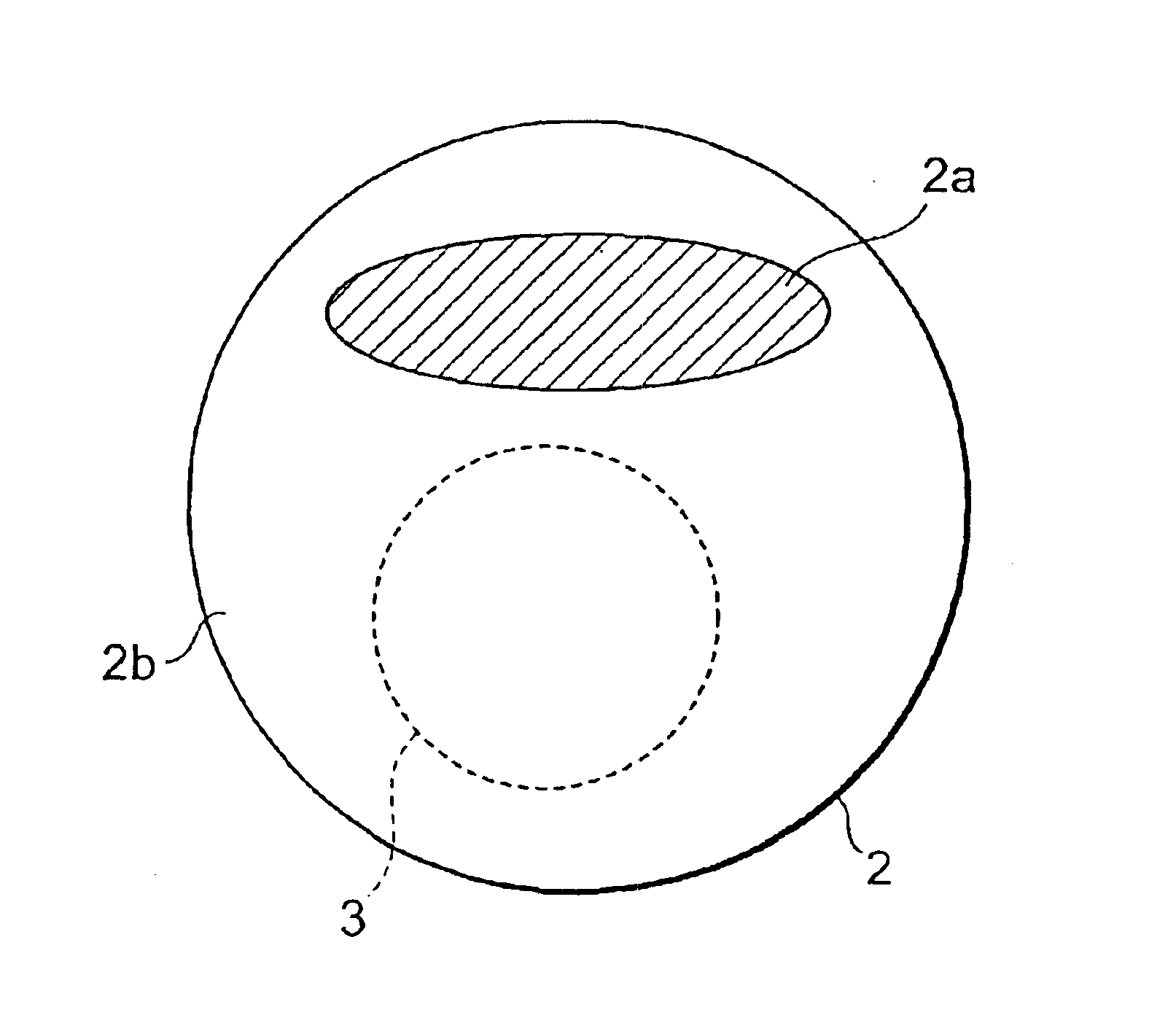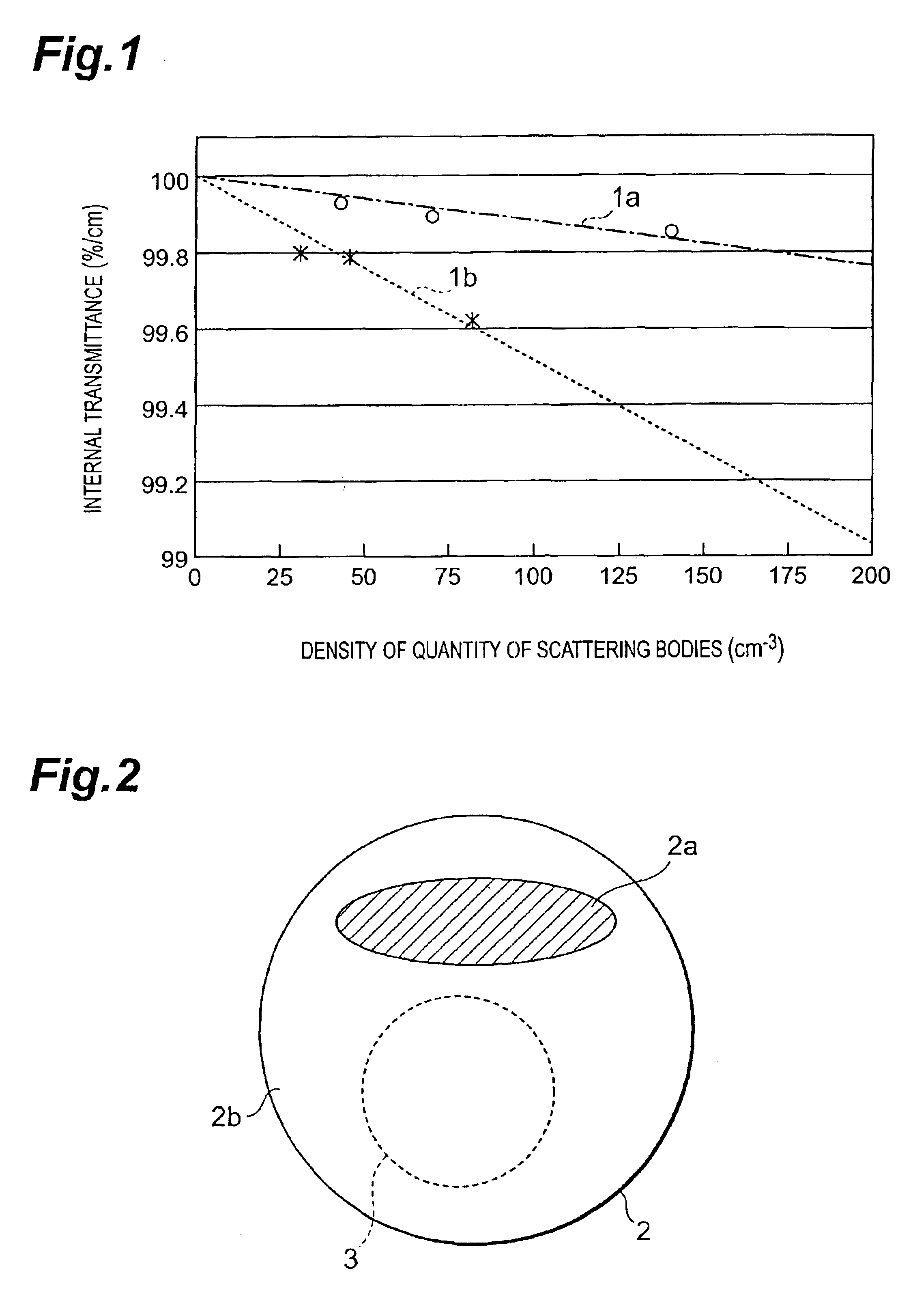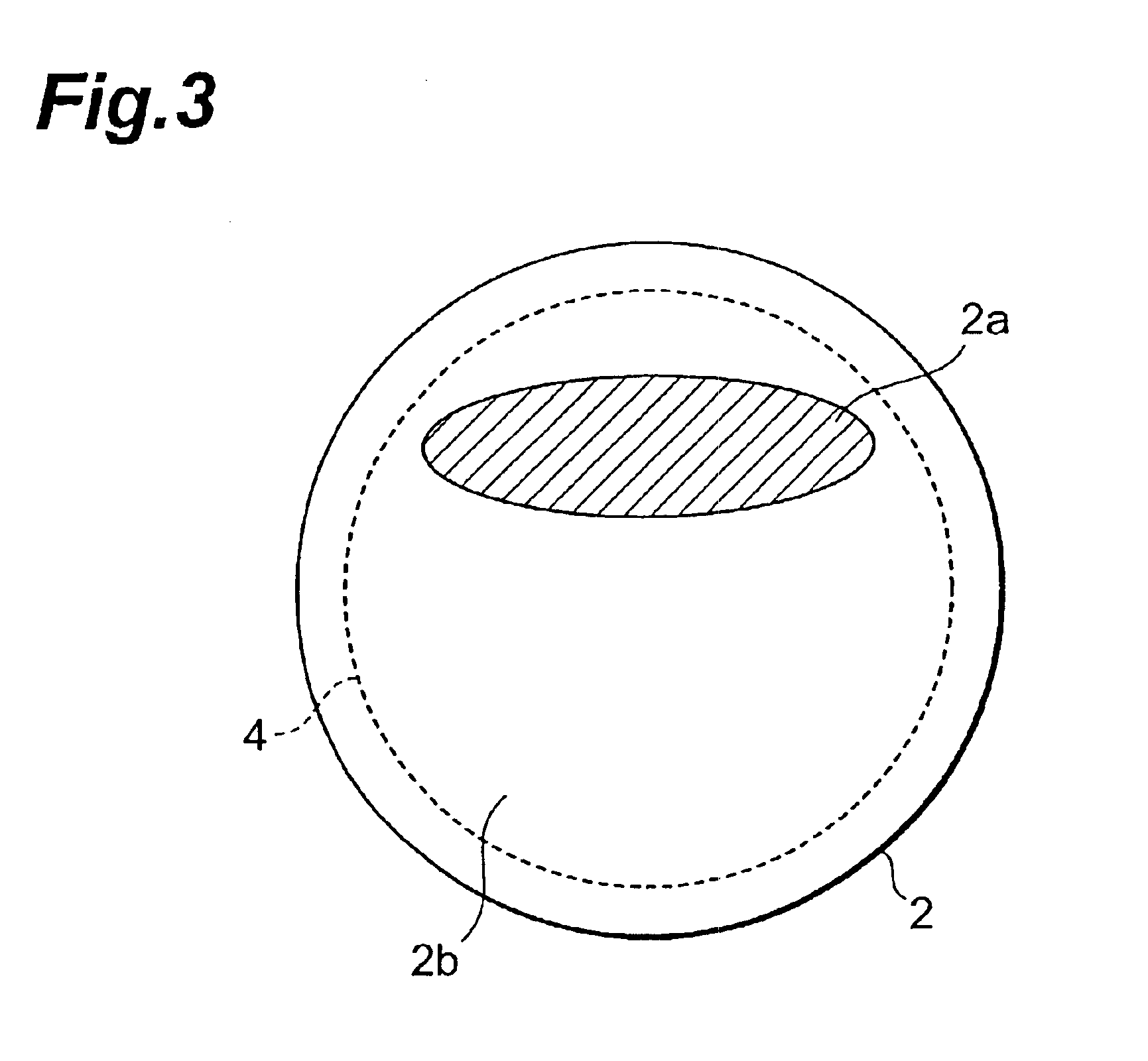Optical member and method of producing the same, and projection aligner
a technology of optical members and projection aligners, which is applied in the field of optical members, can solve the problems of adverse influences, insufficiency of throughput of the entire optical system, and accumulation of transmission losses on the whole optical system, so as to improve the throughput of the optical system, enhance imaging performance, and improve the effect of optical system throughpu
- Summary
- Abstract
- Description
- Claims
- Application Information
AI Technical Summary
Benefits of technology
Problems solved by technology
Method used
Image
Examples
example 1
(Fabrication of Optical Member)
Impurity elements such as metal were removed to the utmost from 50 kg of calcium fluoride powder (average grain size: 40 μm, a proportion of grains having sizes no smaller than 0.5 times and no larger than 1.5 times of the average grain size: 57%, concentrations of impurities: Cl<0.1 ppm, Br<0.1 ppm, I<0.1 ppm, Co<0.05 ppm, Ce<0.05 ppm, La<0.05 ppm, Y<0.05 ppm, Mn<0.1 ppm, Cu<0.1 ppm, Ni<0.1 ppm, K<0.1 ppm, Cr<0.1 ppm, Li<0.2 ppm, Na <0.2 ppm, Pb<0.5 ppm, Fe<0.5 ppm, Ba<1.0 ppm, Sr<20 ppm). 1.6 kg of lead fluoride (about 1 mol %) was added as a scavenger thereto and agitation was satisfactorily performed. The mixture was put into a crucible made of carbon, which was held in a clean condition by rinsing with calcium fluoride powder. Then the crucible was introduced into a pre-processing apparatus which was cleaned and held in a clean condition. After the inside of ...
example 2
1.6 kg of lead fluoride (about 1 mol %) was added as a scavenger to 50 kg of calcium fluoride powder similar to example 1 and agitation was satisfactorily performed. The mixture was put into a crucible made of carbon, which was held in a clean condition by rinsing with calcium fluoride powder. Then the crucible was introduced into a pre-processing apparatus which was cleaned and held in a clean condition. Here, the above-mentioned operations were performed inside a clean room of class 10,000 in order to avoid interfusion of impurity elements or dust in the event of mixing and agitation and in the event of filling the raw material.
After the inside of the apparatus was pumped out to vacuum, the temperature was maintained at 300° C. for a given time period, whereby impurities such as water or carbon dioxide were removed by evaporation. Next, the temperature was increased slowly so as to promote a sufficient reaction between the calcium fluoride powder and the scavenger. The calcium flu...
example 3
Among the lenses constituting the projection optical system shown in FIG. 5, the optical member of example 1 was applied to six lenses L45, L46, L63, L65, L66 and L67, and lenses made of fused silica (internal transmittance including loss by scattering: about 99.8%) were applied to the rest of the lenses. Accordingly, a projection exposure system shown in FIG. 4 was fabricated.
As a result of evaluation of an imaging performance of this projection exposure system, desired throughput (135 sheets / hr) was achieved in the case of φ200-mm wafers. Moreover, flares and ghosts observed therein accounted for about 1% as light noises, which were almost ignorable in practical use.
PUM
| Property | Measurement | Unit |
|---|---|---|
| diameter | aaaaa | aaaaa |
| diameter dmax | aaaaa | aaaaa |
| diameter | aaaaa | aaaaa |
Abstract
Description
Claims
Application Information
 Login to View More
Login to View More - R&D
- Intellectual Property
- Life Sciences
- Materials
- Tech Scout
- Unparalleled Data Quality
- Higher Quality Content
- 60% Fewer Hallucinations
Browse by: Latest US Patents, China's latest patents, Technical Efficacy Thesaurus, Application Domain, Technology Topic, Popular Technical Reports.
© 2025 PatSnap. All rights reserved.Legal|Privacy policy|Modern Slavery Act Transparency Statement|Sitemap|About US| Contact US: help@patsnap.com



